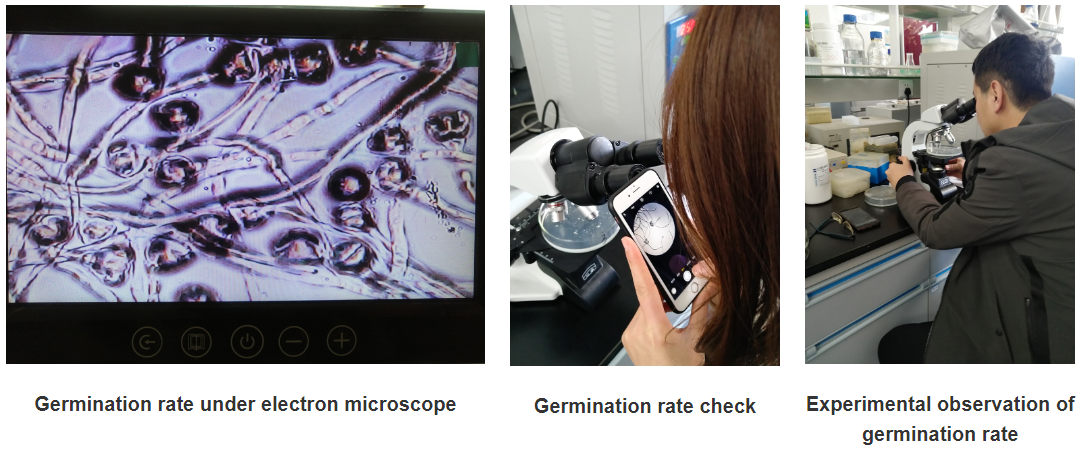ਨਵੰ. . 09, 2024 11:18 Back to list
High-Quality Sweet Cherry Pollen Compatibility for Optimal Pollination and Fruit Production
High-Quality Sweet Cherry Pollen Compatibility
Cherries, with their luscious taste and vibrant color, have long been a favorite among fruit enthusiasts and growers. The cultivation of sweet cherries (Prunus avium) relies heavily on the compatibility of pollen between various cherry cultivars. High-quality sweet cherry pollen compatibility not only bolsters fruit set but also enhances the quality of the cherries produced. Understanding the dynamics of pollen compatibility is essential for optimal cherry production, and in this article, we will explore the factors that contribute to high-quality sweet cherry pollen compatibility.
Importance of Pollen Compatibility
Pollen compatibility between sweet cherry varieties is crucial for successful cross-pollination. Unlike some other fruit trees, sweet cherries are largely self-sterile, meaning they require pollen from a different cultivar to produce fruit. This self-incompatibility necessitates the selection of compatible pollen sources to ensure effective fertilization. A good understanding of which cherry varieties can successfully cross-pollinate enhances yield, fruit quality, and overall orchard health.
Factors Affecting Pollen Compatibility
The interaction between pollen and stigma (the female part of the flower) is at the heart of pollen compatibility. Several factors influence this interaction
1. Genetic Compatibility Each cultivar has unique genetic traits that determine its pollen’s capability to fertilize another cultivar’s ovules. Understanding the genetic relationships among cherry varieties can help growers select compatible pairs. For instance, classic cultivars like Bing and Rainier have established compatibility scenarios that lead to high fruit set.
2. Pollen Viability The quality and viability of pollen are critical for successful fertilization. High-quality pollen should be abundant, fresh, and viable. Factors such as weather conditions during bloom, the age of pollen, and the technique of pollen collection can influence viability. For example, pollen collected in cooler and dry conditions tends to retain more viability compared to that collected in damp, warm weather.
3. Bloom Timing Synchronization of bloom periods is essential. Cultivars that bloom at similar times maximize the chances of successful cross-pollination. If two compatible varieties bloom at different times, the chances for effective pollination diminish, irrespective of pollen quality.
4. Pollinator Activity Insects, particularly bees, play a significant role in the process of cross-pollination. Healthy populations of pollinators enhance pollen transfer between compatible cultivars. Growers can attract pollinators by planting wildflowers and maintaining a healthy ecosystem, thereby improving pollen exchange.
high quality sweet cherry pollen compatibility

5. Environmental Factors Temperature, humidity, and even rainfall can impact pollen germination. High humidity and rainfall can wash pollen away, while extreme temperatures can hinder pollen viability. Understanding these environmental impacts helps growers manage their cherry crops more effectively.
Selecting High-Quality Cherry Varieties
To optimize sweet cherry production, it is essential to select high-quality cultivars that exhibit good pollen compatibility
- Bing Known for its rich flavor and large size, Bing is one of the most popular sweet cherry varieties and serves as an excellent pollinator for other varieties.
- Rainier This variety is treasured for its sweet flavor and unique yellow-red color. It requires cross-pollination for maximum yield and is compatible with several other cultivars.
- Lapins A self-fertile cultivar, Lapins can produce fruit with its own pollen but performs best when cross-pollinated with other sweet cherries, such as Bing or Rainier.
- Stella Another self-fertile option, Stella has a robust flavor and can enhance the yields of nearby sweet cherry trees by providing viable pollen.
Conclusion
High-quality sweet cherry pollen compatibility is a vital aspect of successful cherry production. By understanding the genetic makeup, improving pollen viability, ensuring bloom synchronization, and fostering a healthy environment for pollinators, cherry growers can maximize fruit set and quality. Knowledge of compatible cultivars allows for strategic planning in orchard management, ultimately leading to bountiful harvests of delicious sweet cherries that everyone can enjoy. As the demand for high-quality fruits continues to rise, the significance of pollen compatibility in cherry cultivation will only grow, driving further research and innovation in the field.
-
Pollen Peach Tree for Pure Pollination and High-Quality Peach Pollen
NewsJul.30,2025
-
Premium Cherry Pollen for Pure Pollination & Different Types
NewsJul.30,2025
-
Artificial Pollination Solutions for Various Plant Pollen Types
NewsJul.29,2025
-
Artificial Pollination Solutions for All Plant Pollen Types
NewsJul.29,2025
-
Premium Plant Pollen for Pure Pollination & Pollen Block Solutions
NewsJul.29,2025
-
Artificial Pollination Solutions for Efficient Crop Yields
NewsJul.28,2025